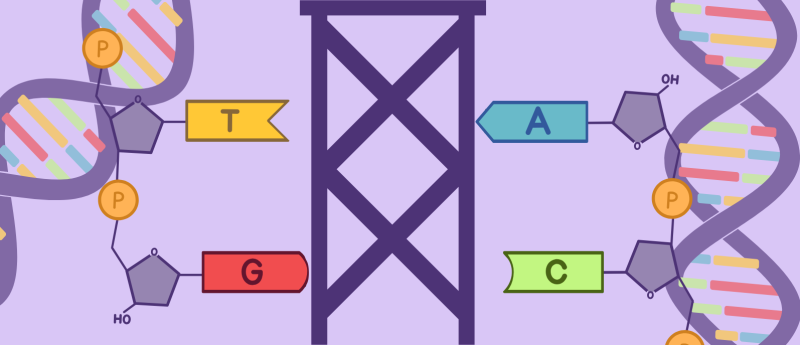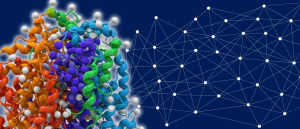Enzyme scaffold restricts key pathway in DNA synthesis

NUDT5 enzyme acts as a molecular scaffold that maintains metabolic balance.
Inside every cell, a finely tuned metabolic network determines when to build, recycle or stop producing essential molecules. A central part of this network is folate metabolism, a process that provides vital chemical units for the synthesis of DNA, RNA and amino acids. When this system is disturbed – for example, through genetic mutations or a lack of dietary folates – the consequences can range from developmental disorders to cancer.
Now, researchers from the Research Center for Molecular Medicine of the Austrian Academy of Sciences (CeMM; Vienna, Austria), together with collaborators from the University of Oxford (UK), have identified an unexpected player in this metabolic balance: the enzyme NUDT5. Their study shows that NUDT5 helps to switch off purine production – the chemical pathway that generates the building blocks of DNA – but does so without using its enzymatic activity. Instead, the protein acts as a kind of molecular scaffold that physically restrains a key biosynthetic step when purine levels are already high.
A new role for an old enzyme
Purines are essential molecules that cells use to build DNA and RNA and to store energy. They can be recycled from existing material or produced from scratch through the so-called de novo pathway – an energy-intensive process that must be tightly controlled.
In their study, the researchers explored this control mechanism by studying cells with mutations in the gene MTHFD1, a crucial enzyme in the folate cycle. Folate metabolism provides the one-carbon units required for purine synthesis, and defects in this pathway cause rare genetic diseases and influence cancer risk.
 How will AI-first drug design transform human health?
How will AI-first drug design transform human health?
In this interview, Miles Congreve, Chief Scientific Officer at Isomorphic Labs, details the exciting new developments in AlphaFold 3 and his company’s new predictive models, which are changing the way we approach drug discovery and design.
Using a combination of genetic screening, metabolomics and chemical biology, the team discovered that the protein NUDT5 interacts with another enzyme, PPAT, which catalyzes the first step of purine synthesis. When purine levels rise, NUDT5 binds to PPAT and likely locks it into an inactive form – effectively telling the cell to stop producing more purines.
Surprisingly, this function of NUDT5 does not rely on its known enzymatic activity, which breaks down nucleotide derivatives. Even when its catalytic site was chemically blocked or genetically disabled, the protein continued to regulate purine synthesis. Only when NUDT5 was completely removed – either through genetic knockout or a newly developed molecule that selectively degrades it – did cells lose this control mechanism.
Metabolic control with health implications
The discovery sheds light on how cells sense and respond to changes in their metabolic environment. “NUDT5 has long been classified as an enzyme that hydrolyzes metabolites,” shared Stefan Kubicek, Principal Investigator at CeMM and senior author of the study. “But our work reveals a completely different role – it acts as a structural regulator that determines whether the cell keeps producing purines or not.”
This mechanism may also explain why some cells become resistant to certain cancer drugs. “Many chemotherapies, such as 6-thioguanine, work by mimicking purine molecules and blocking DNA synthesis,” explained Tuan-Anh Nguyen (CeMM), co-first author of the study. “But we found that cells without functional NUDT5–PPAT interaction were less sensitive to these treatments, suggesting that mutations in NUDT5 could contribute to drug resistance in tumors.” The key role of NUDT5 in controlling cancer drug sensitivity is also supported by similar findings from Ralph DeBerardinis’ laboratory (University of Texas Southwestern Medical Center, TX, USA).
In addition, the research connects the dots between folate metabolism, purine synthesis and diseases caused by MTHFD1 deficiency, a rare genetic disorder that affects immune and neurological development. “Because the folate and purine pathways are tightly linked, understanding this regulatory network could eventually inform new therapeutic approaches,” Jung-Ming George Lin, co-first author of the study, added.
The collaborators in Kilian Huber’s lab in Oxford also developed a chemical degrader called dNUDT5, which can selectively eliminate NUDT5 from cells. This tool will allow scientists to study the pathway in more detail and may offer future possibilities for protecting healthy cells from chemotherapy side effects.
“Our findings highlight that enzymes not only can act via the chemical reactions they catalyze, but also through their structure,” concluded Kubicek. “Sometimes, it’s the physical presence of a protein that makes the crucial difference.”
This article has been republished from the following materials. Material may have been edited for length and house style. For further information, please contact the cited source. Our press release publishing policy can be accessed here.